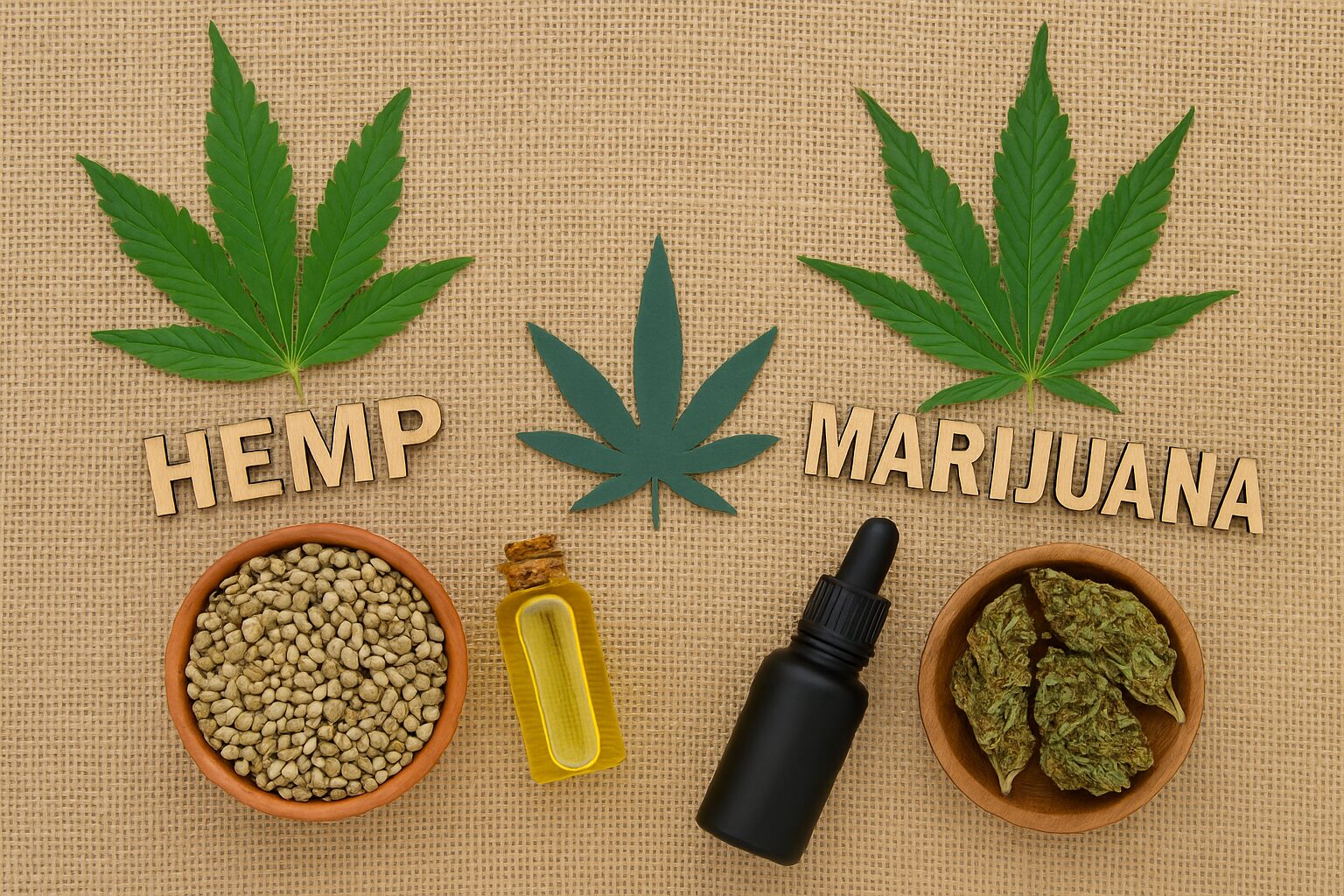The terms “hemp” and “marijuana” are often used interchangeably, but they actually describe two distinct forms of the cannabis plant.
Understanding the difference is essential for anyone interested in cannabis, whether for health, wellness, or industry.
🌿 Same Plant, Different Purpose
Both hemp and marijuana belong to the Cannabis sativa species.
The main difference lies in THC content, the compound responsible for the psychoactive “high.”
- Hemp: less than 0.3% THC, non-psychoactive.
- Marijuana: typically 5–30% THC, produces intoxicating effects.
👉 Learn more about THC and CBD in our Cannabinoids Explained article.
⚖️ Legal Definitions
Hemp’s low THC level makes it legal in most countries for industrial and commercial use.
Marijuana, however, remains tightly regulated in many regions due to its psychoactive effects.
External resource: European Commission on Industrial Hemp.
🧴 Uses of Hemp
Hemp is incredibly versatile:
- Textiles: eco-friendly clothing and rope.
- Paper: strong, sustainable fibers.
- Food: seeds rich in protein and omega-3.
- CBD products: wellness oils and creams.
🌿 Uses of Marijuana
Marijuana is cultivated for medical and recreational purposes.
- Medical: pain relief, anxiety reduction, sleep aid.
- Recreational: relaxation, creativity, enjoyment.
The difference is not only in purpose but also in cultivation techniques and plant structure.
🧬 Plant Characteristics
| Feature | Hemp | Marijuana |
|---|---|---|
| THC Content | < 0.3% | 5–30% |
| CBD Content | High | Varies |
| Height | Tall (up to 4m) | Shorter, bushier |
| Use | Industrial & wellness | Recreational & medical |
| Legal Status | Mostly legal | Restricted in many countries |
📌 Key Takeaways
- Hemp and marijuana are both cannabis but differ mainly in THC content.
- Hemp is used for industry and wellness; marijuana is used for psychoactive and medical purposes.
- The legal distinction depends on THC percentage.


Leave a Reply